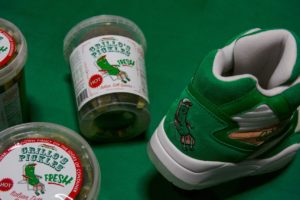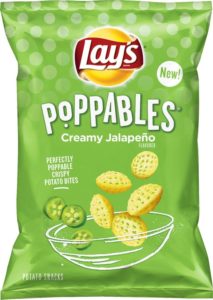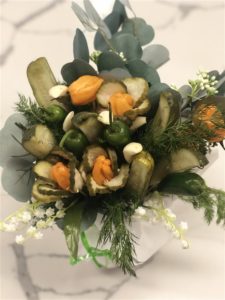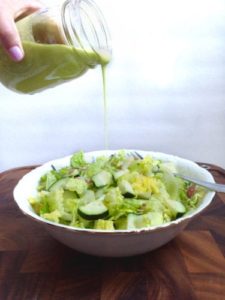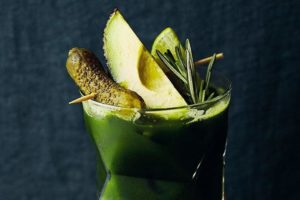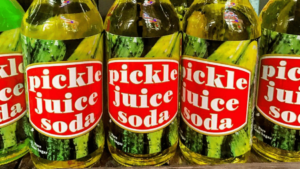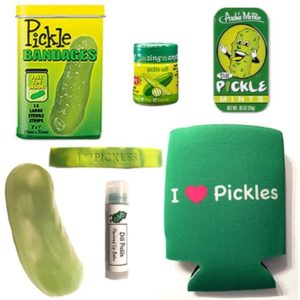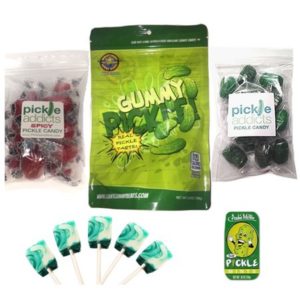Grillo’s Pickles New Shoe, “The Pickle,” Is A Limited Edition Collab With Ewing Athletics
By Emma Lord
Photo by: Grillo’s Pickles
Grillo’s limited edition pickle shoes.
Ah, the struggle as old as time: knowing in your heart that pickles are the superior snack to end all other snacks, but not having a way to properly communicate that belief in a nonverbal way to strangers on the street. Well, friends, that’s all about to change. Grillo’s Pickles is releasing a sneaker called “The Pickle” with Ewing Athletics, making it that much easier to go about your day while reminding everyone within a 360 degree radius of you that pickles exist, and that human existence only has two true states: enjoying pickles, and the rest of your boring regular life.
The limited edition shoes, which drop on the Ewing Athletics website on March 4 and will retail for $140 a pair, are every bit as much a labor of love as Grillo’s actual pickles; in fact, there’s not a single square inch of the shoe that hasn’t been specifically branded to the pickle lover’s lifestyle. Per a press release from Grillo’s Pickles, “The clear soles and plastic lining of the laces represent the brand’s farmer’s market-styled jar filled with seven natural ingredients — cucumbers, salt, dill, garlic, water, grape leaves & vinegar. The green suede represents the organic dill, while the green leather is a nod to the crisp, crunchy cucumbers used to make each handpicked jar. The white laces represent the fresh California-grown garlic.”
The back of the shoe also displays an image of Grillo’s iconic mascot, Sam, Sam the Pickle Man — plus, if you look inside the sole, you’ll see an image of the OG Grillo’s Pickles cart. That image, as it turns out, has a bit of an ~origin story~ more linked to the new sneakers than you might expect. The cart, which originally opened in Boston in 2008 selling two pickles for a buck, was founder and CEO Travis Grillo’s new pursuit after Nike turned him down for a job as a sneaker designer. So basically, this full circle pickle moment is a pretty big dill.
Since that launch in 2008, Grillo’s has not only taken up so much space in the pickle market that they’ve not only solidified their place on the sides of all our sandwiches and in our actual legit human hearts — they’ve also launched a whole slew of pickle merch, designed by founder Travis Grillo. You officially live in a world where you can rep pickles on your shirts, your hats, your water bottles, and even your beach pong paddles, all of which are available on the Grillo’s online shop.
That said, I doubt anything beats the pure unadulterated and ridiculous joy of skipping in a pair of pickle sneakers down the sidewalk, a specific kind of joy Grillo’s and Ewing Athletics are bestowing on us with this collab. “Ewing Athletics is always looking to collaborate with companies that would typically be outside of the box for a sneaker brand and Grillo’s is a perfect partner,” Ewing Athletics President, David Goldberg, said in a press release. “Premium Pete made the connection and we were able to come up with a great design with a fresh look to match the pickles. We have done other food related projects in the past and we try to make each one better than the last.”
Just know that if you want to snag a pair of these, you’ll have to act fast — they go on sale on March 4 exclusively on the Ewing Athletics site.

